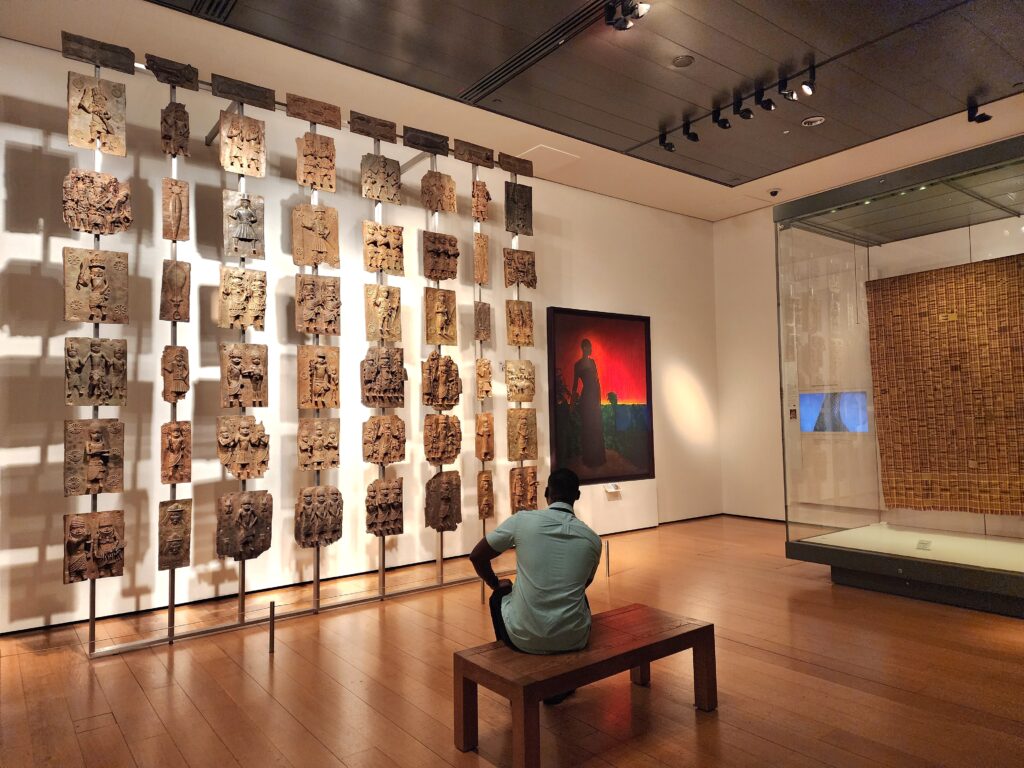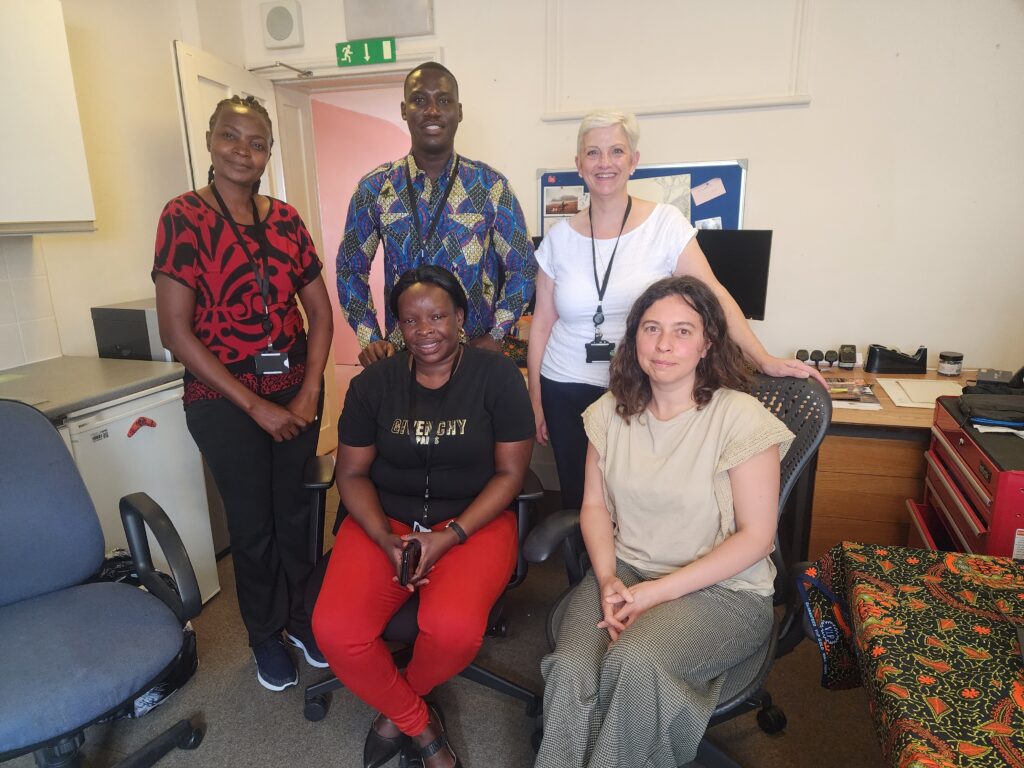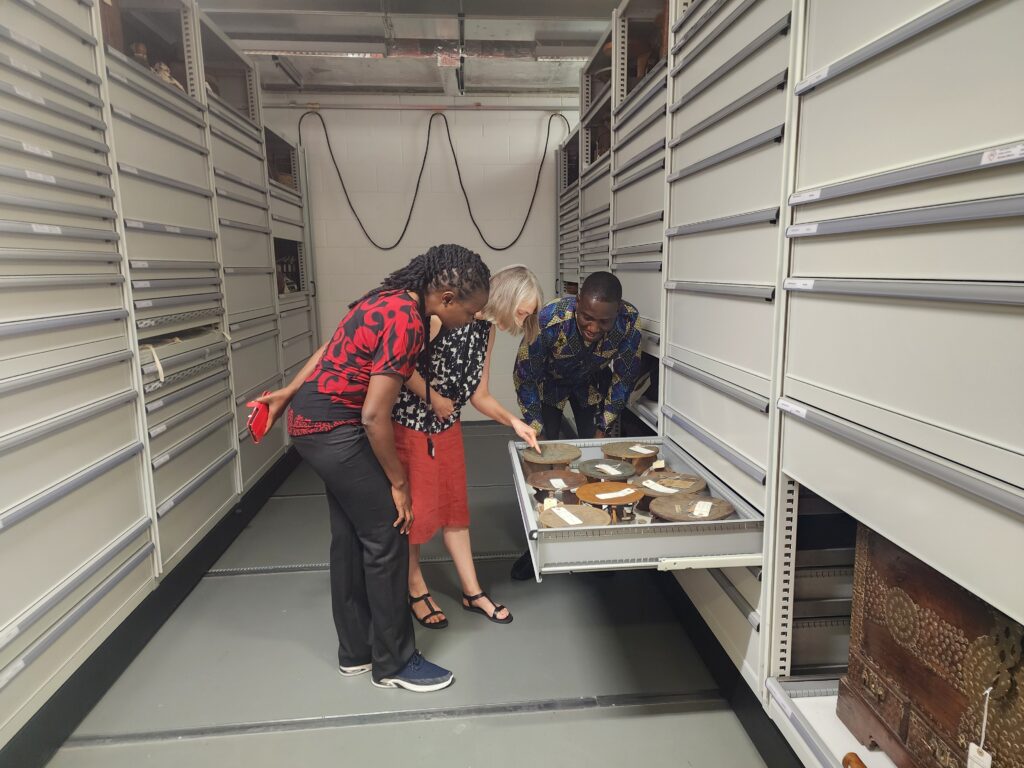Embracing Learning Opportunities: A Day to Remember (Richard Ohene-Larbi, Ghana, ITP 2024)
Written by Richard Ohene-Larbi, Museum Educator, Ghana Museums and Monuments Board (Ghana, ITP 2024)
Hello and welcome to my blog for this year’s ITP. My name is Richard Ohene-Larbi from Ghana. I work with the Ghana Museums and Monuments Board as a Museum Educator. I am currently pursuing a doctoral degree in museum and heritage studies at the University of Ghana, Legon. I was excited when I got confirmation of my selection to be part of this year’s ITP. I was also curious as to how I am going to use the opportunity to fulfil my career aspirations. My expectation has always been that the ITP will offer me the platform to learn more about museum education from an international perspective on one side, and further strengthen my professional and academic network on the other hand.

It is always a great joy to witness the magnificence of the Great Court, especially before the museum opens its doors to visitors at 10 am. It amazes me how the court can be turned from absolute silence to organized ‘chaos’ within a twinkling of an eye by visitors. Amidst the trooping in of numerous visitors appeared the smiling face of Helen Anderson who met my colleagues and I at the Information Desk. I spent the day with fellows from Kenya (Doris Kamuye and Lillian Amwanda) because it was our Department Day at the Africa, Oceania and Americas Department. We had a series of sessions with our mentors Helen Anderson, Julie Hudson and Zoe Cormack.
First, Helen introduced us to Orly Orbach at the department. As the Project Curator of the British Museum’s Endangered Material Knowledge Programme (EMKP), Orly Orbach gave us an extensive overview of the programme highlighting the fact that the EMKP offers small and large grants for projects documenting material knowledge systems under threat or in danger of disappearing. The completed projects are submitted and stored in the British Museum’s repository. The legal or copyrights issues associated with the use of the project’s database were also discussed. I learned more about the application process and some key criteria used in assessing grant applications. It was inspiring to know that some projects were being funded in Ghana and Kenya as it gave us a fair idea of some of the priority projects the EMKP is interested in. This session was particularly insightful because it reiterated the need for African heritage professionals, museum practitioners and scholars to collaborate with communities in conserving material knowledge systems and techniques under threat in the face of rapid urbanization, social disruption and climate change. For those interested in knowing more about EMKP kindly visit their website https://www.britishmuseum.org/our-work/departments/africa-oceania-and-americas/endangered-material-knowledge-programme

In the afternoon, we had the chance to visit the British Museum’s storage where African collections were kept. Julie Hudson gave us a tour of the collections and introduced us to some of the measures put in place by the curatorial team to ensure the safety of the objects. For example, as part of the British Museum’s standard practice, objects that are pest infested are treated and quarantined for six months. They are only returned to the collections storage when they are in good condition or without pest activities on them. Indeed, it was impressive to see the state-of-the-art storage facility with automated racks or shelving used in the storage with the objects kept in pullout drawers. This allows the curators to have easy access to the objects which are arranged according to their countries of origin, and also by their types. This was accompanied by adequate security measures for staff access and proper environmental conditions. Why was I even surprised by the facility? Come on bruv! It is the British Museum. For someone interested in museum decolonization, I was excited when Julie mentioned collaborations with communities in Africa to improve the British Museum’s knowledge and understanding of the objects by adding vernacular names and specific cultural contexts they were used in their communities of origin. I noticed the incorporation of traditional conservation practices in the storage as some drums and stools were wrapped in white. The explanation was that the indigenous communities considered them as sacred, so they did not want them to be openly exposed hence the decision to wrap them in white cloth. However, one can see it when granted permission.

The final part of the day was dedicated to discussing the progress of our Object in Focus display. The session was done with Helen Anderson and Zoe Cormack at the Anthropology Library and Research Centre. Our initial thoughts were shared with the mentors who gave us constructive remarks. The scope document for exhibitions at the British Museum was used as a reference by our mentors to serve as a guide in shaping our ideas for the display.
I really learned a lot today and seeing the diverse African collections truly inspired me. I humbly hand over the baton to my dear Roqaya Al Shokri, Head of the Information Department at Oman Across Ages Museum, to write the next blog.
Medaase!
